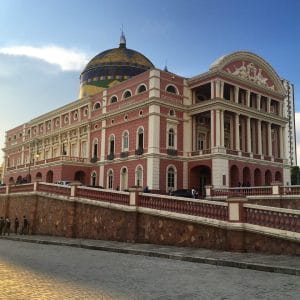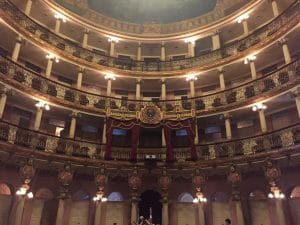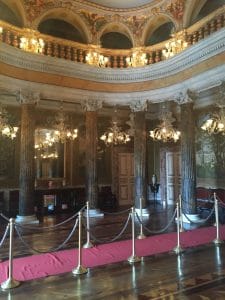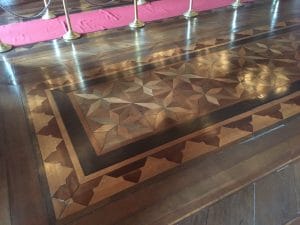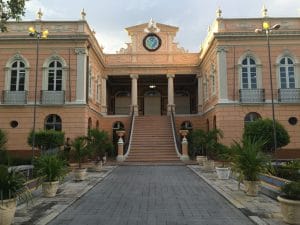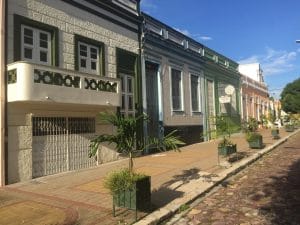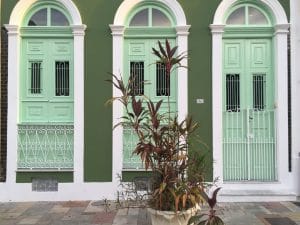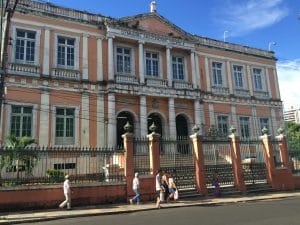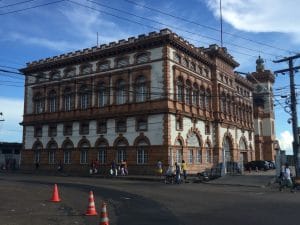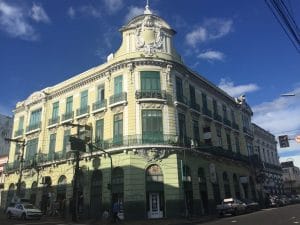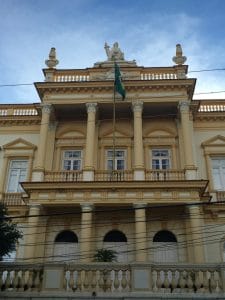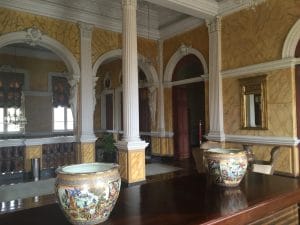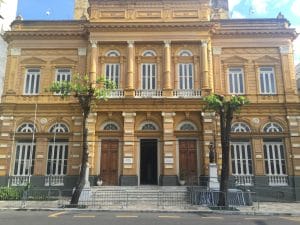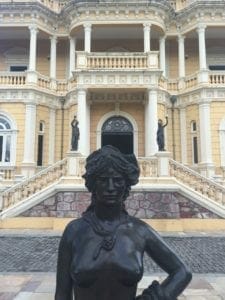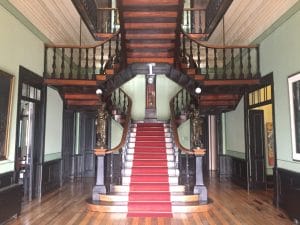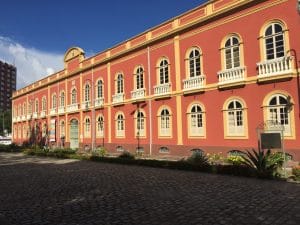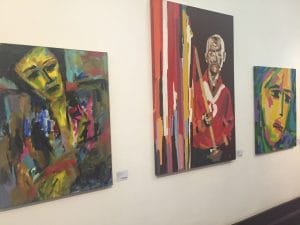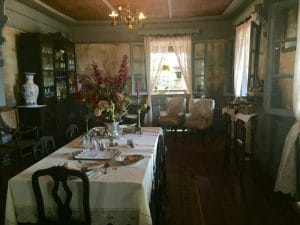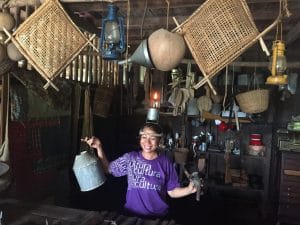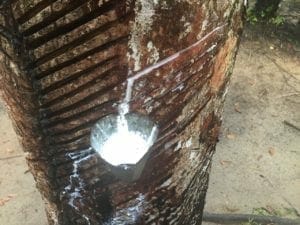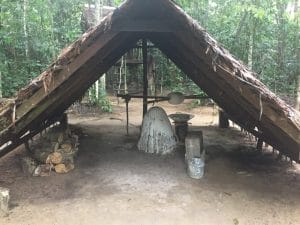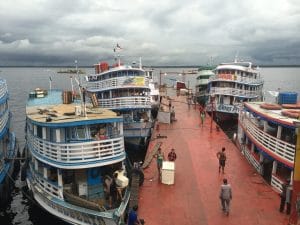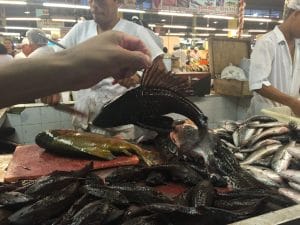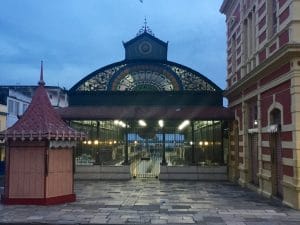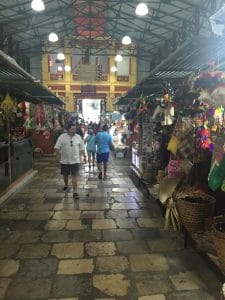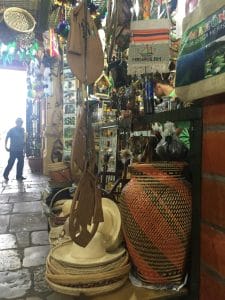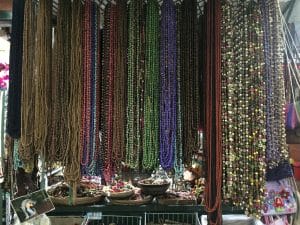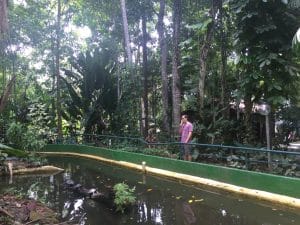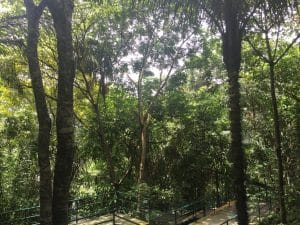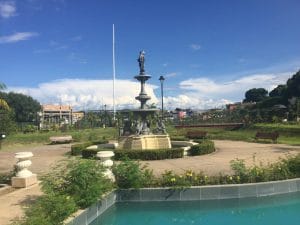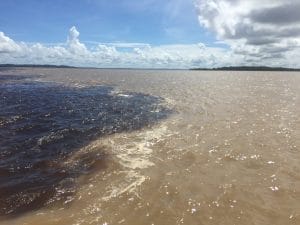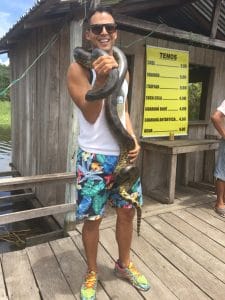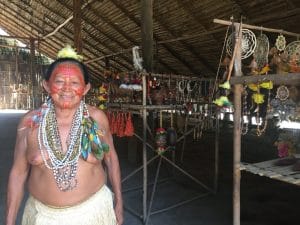I don’t know why it took me so long to visit the North of Brazil, especially Manaus.
We Brazilian don’t give too much importance to the North in terms of tourism and prefer Rio and the beaches in the Northeast. The mindset in Brazil is that the North is just the jungle and nothing else…
But I’m here to claim that you should visit this very special part of Brazil! Not only to understand this country better, but also to have unique and unforgettable experiences.
Without any expectations and just one reference (The Amazon Opera House) I left Sao Paulo for Manaus. The flight took around 4h and even before landing I could see nature’s grandiosity and exuberance in the Amazonas state.
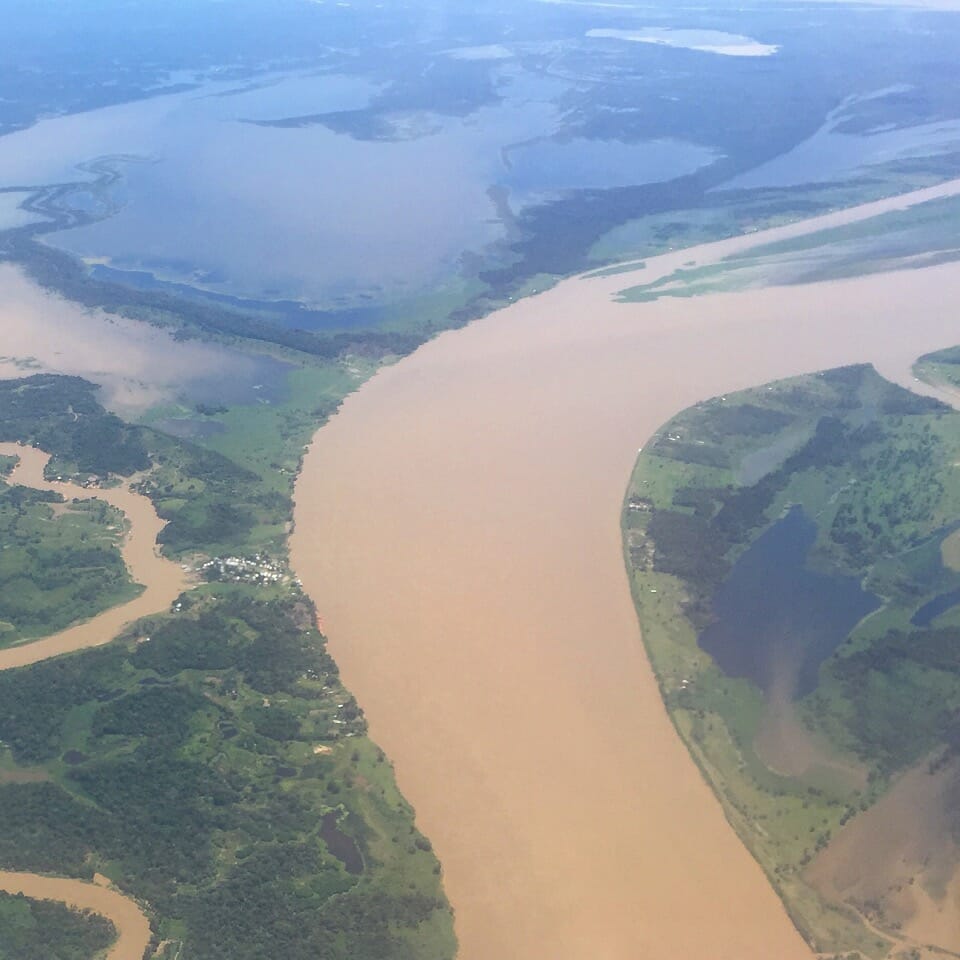
Table of Contents
Manaus
The Portuguese conquered the Amazonas state during the 17th century. Before that it was a Spanish territory, however England, Holland and France made their way through the region in an attempt to conquer it and to establish trade commerce.
The city of Manaus was founded in 1848, very close in time to the rubber boom (from 1850 to 1912). The Amazon economy began to prosper based on rubber exploitation, but also cacao, Brazil nuts, rice, guaraná and other forest products.
Manaus attracted many migrants, especially from the Northeast because of the drought, and jobs for foreign workers. They helped to build one of the most promising cities at that time. Manaus was the second city, and the first capital, to have electricity in Brazil, the third in Latin America to have an electric trolley (1896), and the first university in Brazil (Escola Universitária Gratuita de Manaus, 1909).
But it was only after the Proclamation of Republic, in 1889, the “golden age of the rubber” that Manaus, the world’s largest exporter of latex, began to succeed and flourish. During that time, many stunning landmark buildings were constructed.
Historic Center
Manaus’ Historic Center brings visitors back to the 19th Century, the time that the Barões da Borracha (Rubber Barons) used to make cigars with money bills and rich people used to take their clothes to be washed in Europe.
I stayed in the heart of Manaus, just a few steps from Largo São Sebastião (San Sebastian Square), which is surrounded by old and colorful houses, and has an imposing monument in the middle. The floor that makes you wonder is a copy of the famous Copacabana sidewalk, and is an allusion to the meeting of waters (the Solimoes and Negro Rivers meet exactly in Manaus to make the largest river in the world, the Amazon River). Manauaras (who are born in Manaus) are truly passionate about their rivers, especially since this is the main source of living for many of them.
My visiting was just starting and I was already surprised.
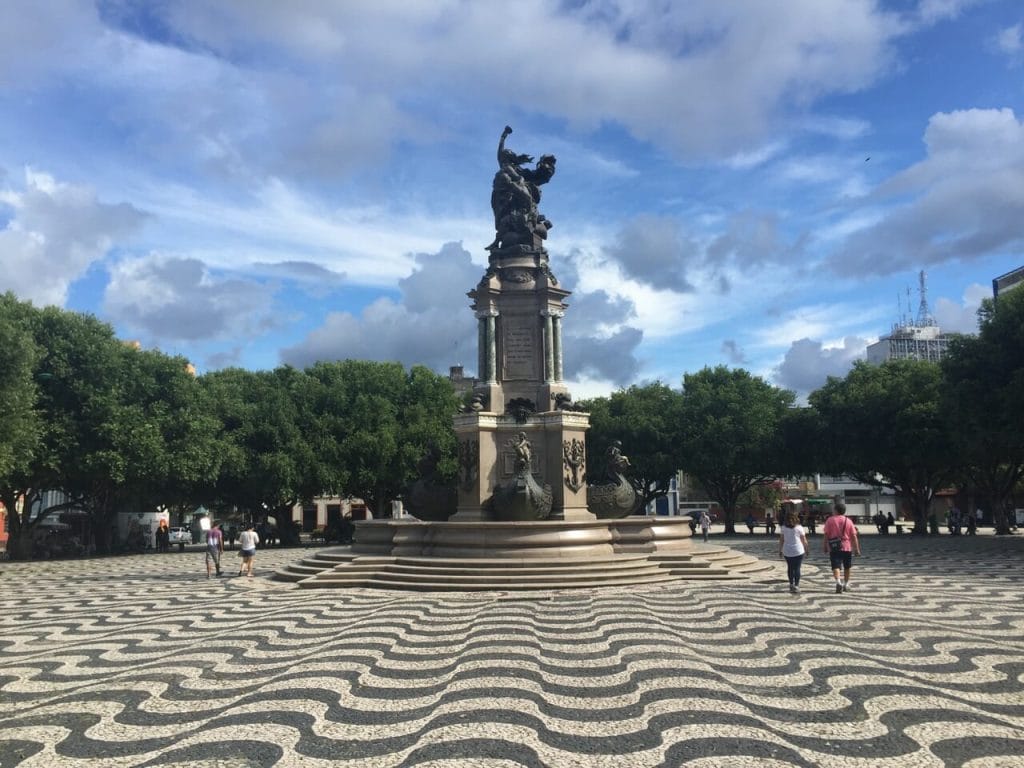
Located in the square is the most iconic landmark building in the city: The Amazonas Opera House. The eclectic style building was inaugurated in 1896 and was designed by the Portuguese architectural company, The Gabinete Português de Engenharia de Lisboa.
All the materials used in the construction are basically imported: the steel girders from Glasgow; glass roof tiles from Alsace; furniture from Paris; Carrera marble, crystal mirrors, candelabra and porcelain vases from Italy; and the leader armchairs came from Russia. Only the wood used is from Bahia, but it was shipped to Europe to be worked.
If I were astonished facing the majestic and exuberant Amazonas Opera House, when I got inside for a guided tour I was speechless. The building is considered one of the 15 most impressive Operas Houses in the world!
The decoration has a mix of Art Nouveau, Baroque and Rococo styles but what really caught my attention were the Greek columns and masks. The Opera House has a capacity for 700 people and was created to be the entertainment venue for the Rubber Barons, and the inspiration came from La Scala and the Opera Garner.
The Salão Nobre on the second floor is a masterpiece, and the perfect combination of luxury and elegance. It has Carrera and red marbles, chandeliers made of bronze and murano glass, and a stunning mosaic wood floor composed of 12.000 pieces of different kinds of wood. I was in awe visiting the Nobel Hall, and it’s the most beautiful part of the Opera House.
There are charming and beautiful buildings scattered all over Manaus’ downtown and most of them are very well preserved.
Palaces, Palaces and Palaces
Manaus has such a rich history, so it is not surprising that there are some striking palaces. Wandering around the streets of Manaus, I found not only one, but three palaces: Rio Negro (Black River), Rio Branco (White River) and Palacio da Justica (Justice)
The Palace of Justice was inaugurated in 1900 and has English neoclassic and Renaissance (Belle Époque) styles. It became a Cultural Center in 2006 and offers free-guided tours for its visitors.
The Rio Branco Palace constructed between 1905 and 1938, has an eclectic style and also has become a Cultural Center. The building is outstanding and it is located on a very pleasant square, very close to the first street of Manaus that still has picturesque old houses.
The Rio Negro Palace was my favorite one and it is just breathtaking! The palace is a former residence of Karl Waldemar Scholz, a Baron of Latex from Germany who settled by the river and built this palace with several rooms decorated in neoclassical style. The bronze statues and the wood stairway are gorgeous! It is also a Cultural Center and offers free-guided tours for its visitors.
Museums
There are many museums in Manaus and the best thing is that most of them are free.
Among all the museums that I visited: State Art Gallery, Image and Sound, Tiradentes, Numismatics, Archeology, Indian, Eduardo Ribeiro’s house, Crime, and Seringal, my two favorites were the State Art Gallery (located in the stunning Provincial Palace, a former merchant residence) and the Museu do Seringal.
Situated on a riverbank in the outskirts of Manaus, Museu do Seringal (Rubber Tree Museum) reproduces the life of a Rubber Barons and his workers during the time of “the golden age of rubber”.
The scenario was created based on a fascinating history that has become a book and a film written by a Portuguese young man, Ferreira de Castro, who escaped from the seringal (the plantation where the latex is extracted).
The ambiance is so trustworthy and the history told by the guide in a fascinating way transports visitors back to that time. The highlights are the adulterated scale that the chiefs used to cheat his workers and make them an almost eternal servant, and the extraction of the latex just in front of you.
I remembered the time that I used to teach Chemistry and tell my students the galvanization process (to avoid the rubber breaking down in cold temperatures and melting in the hot ones), but I’ve never thought that one day I would have the opportunity to see it in person. Unfortunately they don’t make rubber in the museum, but even though, the visit was totally worthwhile.
The Amazon (MUSA) and the Man from the North Museums are also considered excellent.
Markets, Parks and River Beaches
With all the forest and rivers surrounding Manaus, a visit to its markets can be very interesting.
Porto do CEASA is the biggest and by far the most thrilling market in Manaus. Thousand of workers, tons of fruit, fishes and plants will sharpen your senses. Visiting this market is also an opportunity to check the local life, whether inside or outside where the port is located and where most of the huge boats arrive with food, while others depart with travelers.
The most charming market is the Municipal Market, inaugurated in 1882; this building is a replica of the Les Halles Market in Paris, however the Galleria Vittorio Emanuele in Milan inspired its interior. It has art nouveau style with wrought iron works and stained glass windows.
The Municipal Market, aka Mercadão (Big market) is the best and cheapest place to buy souvenirs. There are lovely basketry, beautiful pottery, gorgeous accessories made of seeds and feathers, medicinal plants and natural medicines. I got some bracelets made of açai seeds, but what I really loved was the chocolate filled with cupuaçu, one of my favorite fruits from the Amazon.
Manaus has delightful parks that can be enjoyed and appreciated by visitors and locals. Jefferson Péres Park is one of the most relaxing and beautiful parks in the city. It comprises an area of 53.400 square meters and has over 1200 trees, sculptures, fountains, playground, arches made of iron and kiosks in art nouveau style. It’s all a Belle Époque reference to remember the golden age of rubber.
If the weather is not that hot, this park is a really good option when you visit the Rio Negro Palace, since the park is located just behind the palace.
My favorite park in the city is Bosque da Ciência (The Science Groove Park), which consists of about 32.000 acres situated in an Ecologic Green Corridor on the mid-west of Manaus urban area.
The highlights of the visit are the suspended trail, the science house, the alligator’s vivarium, the manatee nurse project and an over 600 years old Tanimbuca tree (Buchenavea huberi).
I really liked Bosque da Ciência and had a blast walking under its huge and exuberant trees.
One of the new trendy areas in Manaus is Ponta Negra beach. This beach complex opened just before the world cup in 2014 and has an arena, viewpoints, a running path and beach amenities. It also features intense nightlife and has become one of the favorite places for Manauaras.
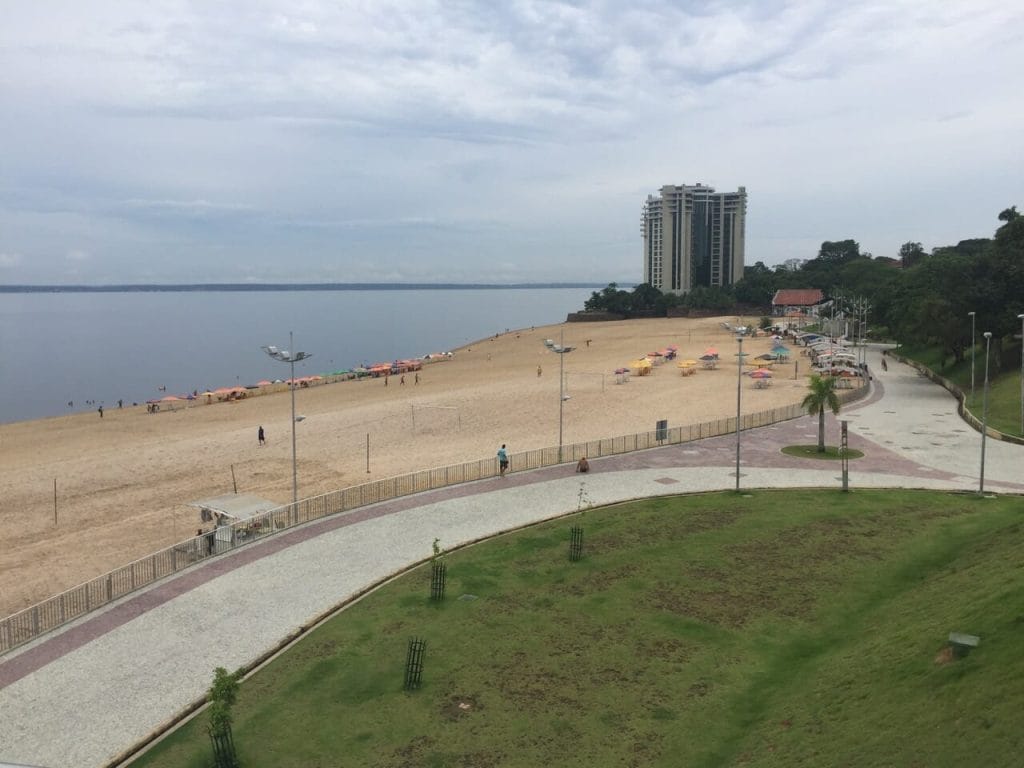
Praia da Lua is another very good beach and has white sand and clean warm water. Located 23 km from Manaus, it can be reached by boat from Ponta Negra and takes around only five minutes. This is one of the most beautiful beaches in the area.
Memorable Experiences
A visit to Manaus cannot be completed without a tour to see the encounter of waters, Swim with the pink dolphin and a visit to an indigenous tribe.
However these activities can be too touristy for some people, this is basically the only opportunity that we have to interact with those gentle and sweet animals that are found only in Africa and the Amazon, and to see an indigenous tribe who lives so close to the city but that still preserves its old habits.
I took this tour and it was one of the most memorable experiences that I’ve ever had and one of the best things that I did during my stay.
I spent four days in Manaus and was truly surprised by the amount and diversity of tourist attractions the city has to offer. After that, I went to the Amazon Rainforest (read the article Adventures in the Amazon), another unforgettable experience.
If you thought that Manaus was a city full of indigenous people and trees, with nothing to do besides get into the jungle, you were completely wrong.
Tips
– Don’t forget to take the yellow fever vacine at least ten days prior to arrival.
– The Amazon Opera House offers free concerts all year-round and the Opera Festival occurs every other year any time between April and May.
– Where to Eat?
Tambaqui de Banda Restaurant
Try the grilled Tambaqui (a typical fish from the Amazon), which comes with rice, beans, salad and farofa (made of cassava flour).
It serves two and costs R$ 54.90 (US$ 15)
Rua José Clemente, 596, Downtown
- What to eat?
– Açai ice cream (a very healthy and rich in antioxidants amazon fruit). In general it is served with granola and banana.
NatAçai serves one of the best açais in town, and the price is really good (half liter R$11 – US$ 3). If you try there, get the plenty one.
Praça São Sebastião in front of the Opera House
– Tacacá: Indian dish typical from Brazilian Amazonia, served in a calabash. Tacacá is made of tucupi (boiled manioc juice with salt, garlic and other seasonings), tapioca starch, jambú (hot and slightly anesthetic paracress leaves), dried shrimps and hot chiles to taste. Drink it hot.
Point do Tacacá da Ivete
Rua Ramos Ferreira on the corner of Tapajos
– Graviola (a very thick and sweet amazon fruit) and Cupuaçu (a kind of sour and very exotic amazon fruit) juices.
– Tapioca with tucumã (an amazon fruit) and white cheese.
- Where to go out?
Caldeira Bar
One of the most traditional bars in the city has samba Saturdays and Sundays from 8:00 to 11:00 PM.
Crowds are fine and foreigners and locals mingle to enjoy an authentic Brazilian experience.
Rua José Clemente, 237 – Centro
Visiting Manaus
- Where is it located?
Manaus, the capital city of the state of Amazonas in the North Region of Brazil, is located near the confluence of the Negro and Solimões rivers (check map here).
- How to get there?
Manaus is surrounded by rivers and the best way to get there is by boat or airplane.
∗ By airplane: Sadly there aren’t many international companies flying direct to Manaus. Some of them companies are: American Airlines, Copa Airlines and Insel Air.
Although there are plenty of flights from several cities in Brazil, specially from São Paulo and Brasília. The companies that fly frequently to Manaus are: TAM, Gol, Azul and MAP.
∗ By boat: there are many boats connecting Manaus with other cities in the North of Brazil, and also with Colombia and Peru. Those boats are huge and you sleep in a hammock (you have to buy it).
To Colombia and Peru it takes in general one week. One of the most common trips is from Manaus to Belem (Pará’s capital) and it takes three and half days.
- Best time to go
There are basically two seasons in Manaus: the rainy and high humidity season (from December to April), and the dry and very hot season (from July to September).
So, the best time to go is the shoulder season: May/June and October/November.
I was there for seven days in the beginning of April of 2016 and four days the weather was sunny and hot, one cloudy day and two days with heavy rain.
- Where did I stay?
∗ I stayed at Local Hostel Manaus.
- Travel costs
∗ Flight from São Paulo to Manaus: R$ 349 (US$ 100).
∗ Five nights at Local Hostel Manaus: R$ 235 (US$ 67).
∗ Tour with Amazing Tours: R$ 300 (US$ 86).
Additional links
For more information about Manaus visit: www.visitamazonastour.com
To book this tour and other tours in Manaus visit: www.manausjungetours.com
To check boat schedules and prices visit: www.portodemanaus.com.br
∗ This post was converted into an app and you can get it clicking here.
- Book Your Flight Find deals on airlines on my favorite search engine: Skyscanner. Be sure to read my How to find cheap flights article.
- Rent A Car Rental Cars is a great site for comparing car prices to find the best deal.
- Book Accommodation Booking.com is my favorite hotel search engine. But Hotels.com and Hilton Hotels have very interesting reward programs.
- Protect Your Trip Don’t forget travel insurance! I always use World Nomads for short-term trips and SafetyWing for long-term ones. Find out why Travel Insurance: Much More Than a Precaution, a Necessity.
- Book Tours in Advance Book unforgettable experiences and skip-the-line tickets with GetYourGuide or Viator .
- Book Ground Transportation BookaWay offers a stress-free experience with secure payments and no hidden fees. You pay online and receive your itinerary by email.
- Luggage Solutions Rent your luggage with Cargo or if you need to drop off your own luggage and enjoy your time without dragging it all over a city, find a LuggageHero shop here.
- Get a Travel Card Revolut Card is a pre-paid debit card that enables cash machine withdrawals in 120 countries. I’ve been using my Revolut Card for over a year and never paid foreign-transaction fees again. Get your Revolut Card with free shipping here.
- Packing Guide Check out my How to Pack a Carry-on Luggage For a Five-month Trip to help you start packing for your trip. Don’t forget your camera, chargers and other useful travel accessories. World Nomads provides travel insurance for travelers in over 100 countries. As an affiliate, we receive a fee when you get a quote from World Nomads using this link. We do not represent World Nomads. This is information only and not a recommendation to buy travel insurance.

